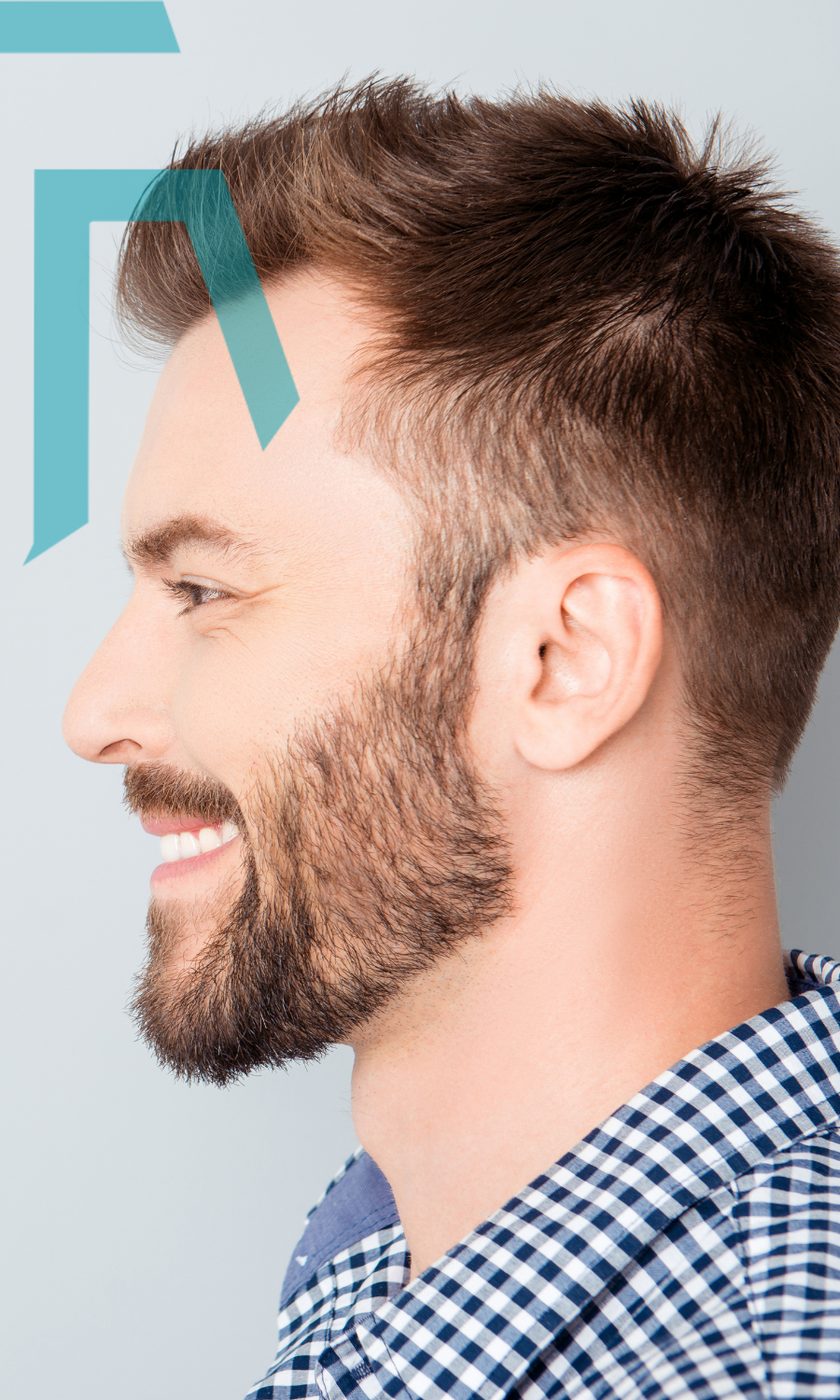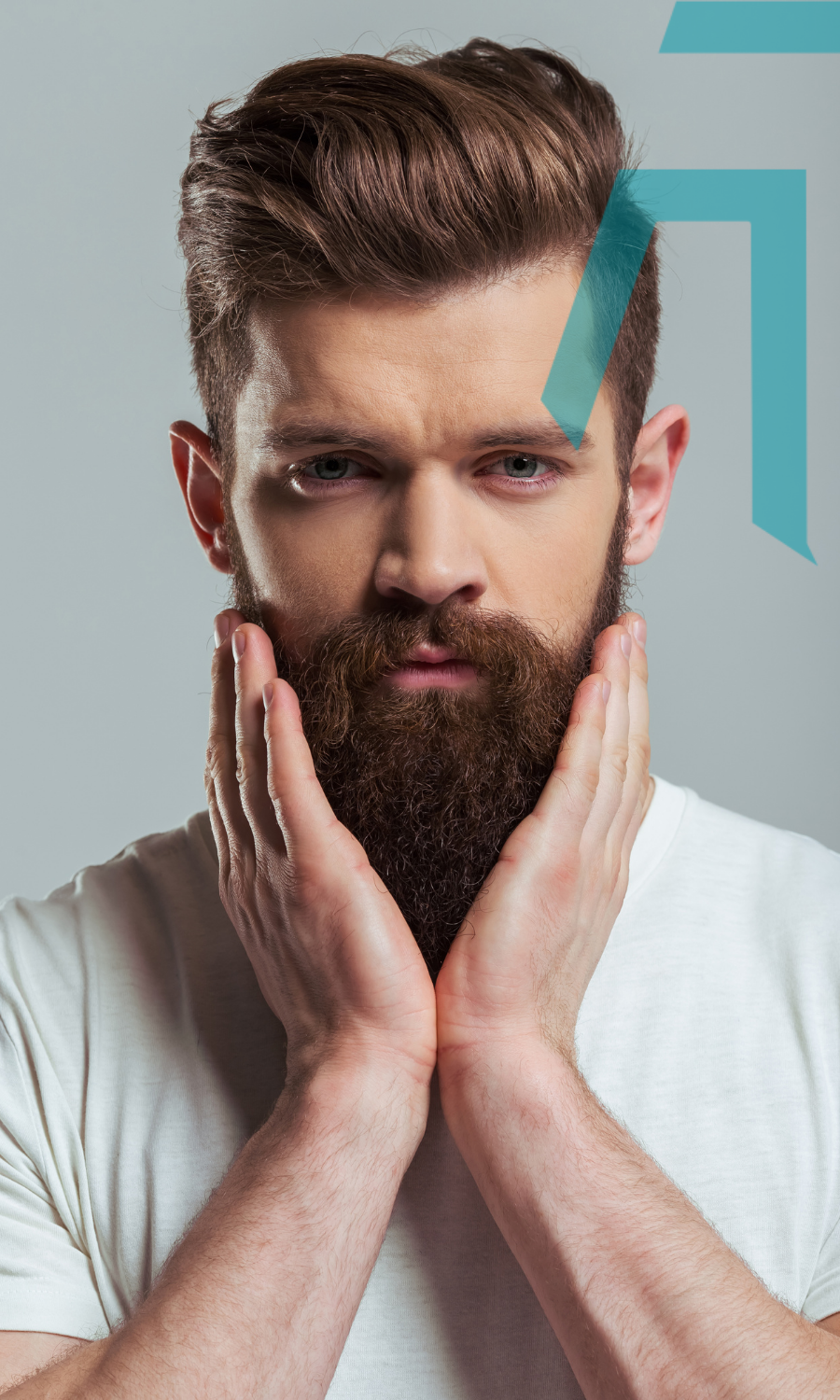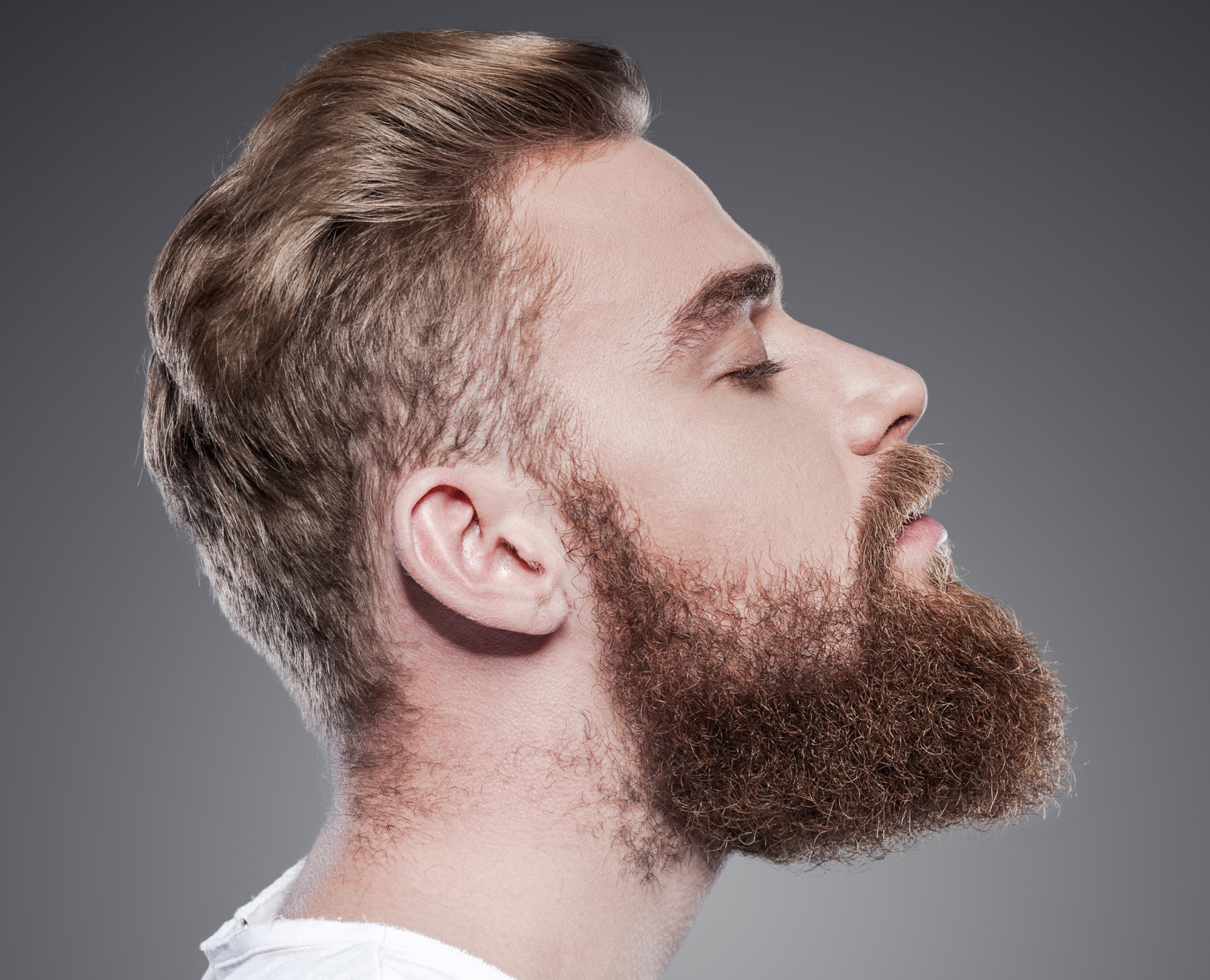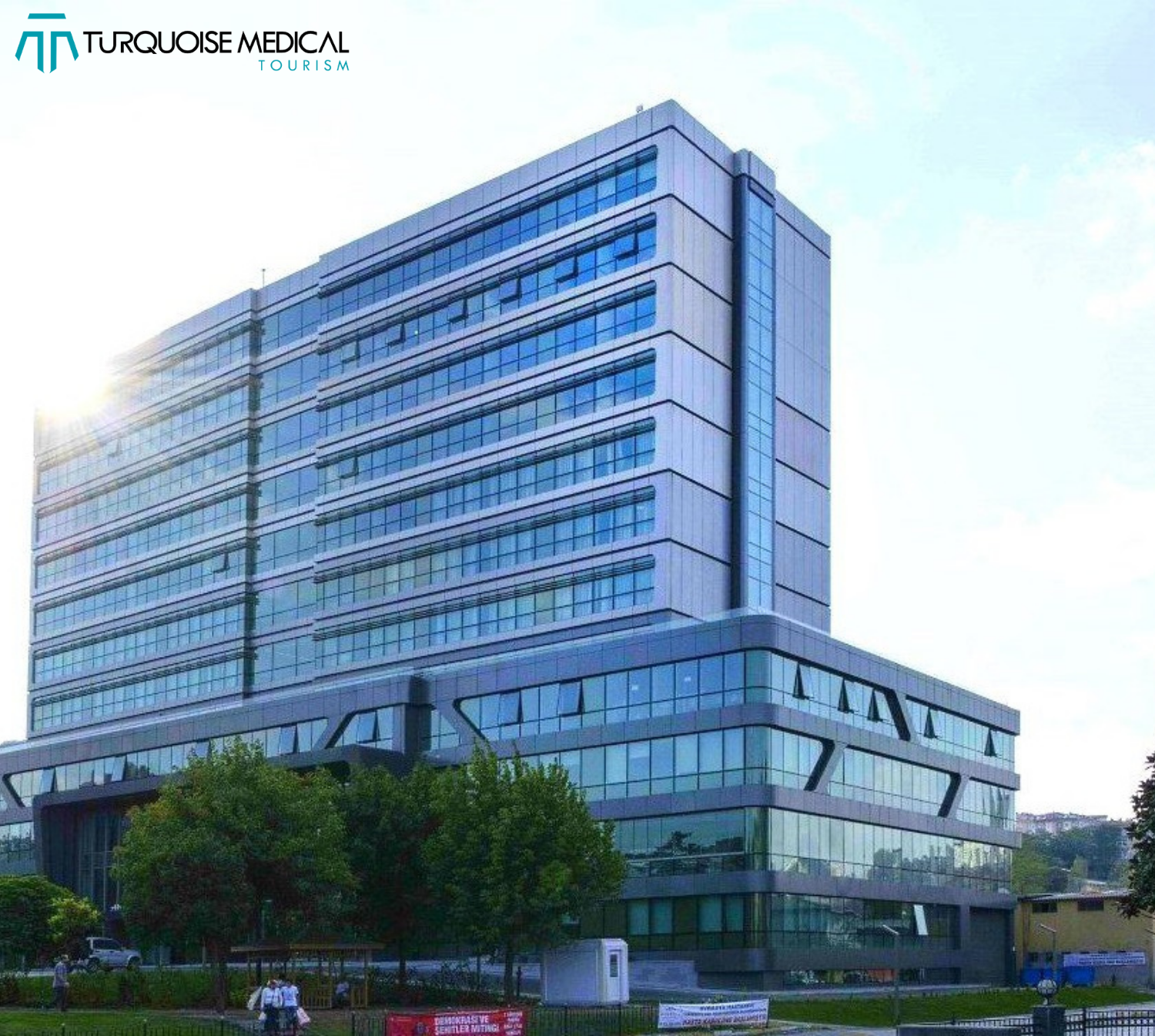Beard and Mustache
Transplant
Make an Appointment
Online Schedule
IntroductionBeard and Mustache Transplant
The trend of beard and mustache transplants has grown in recent years. With a few minor exceptions, the procedure is very comparable to a hair transplant utilizing DHI. People favor beard and moustache transplants for a variety of purely cosmetic reasons.
The primary justification for the transplant is the sparseness of the hair strands on the beard and mustache. The problem can be addressed by placing hair follicles in the appropriate locations. If your transplantation is performed by a qualified specialist, it could be challenging to differentiate it from other components.
Some people dislike the way their beard or moustache is styled, while others may have scars from procedures or hair loss. Beard and mustache transplants can be performed in accordance with any request.
Hair loss on the face can be brought on by hormonal issues and metabolic diseases in addition to scars and burns that may form for a variety of reasons. Before determining whether to have a beard transplant, you should look into the cause of the loss of the beard or mustache. We encourage you to wait until you’re 22 years old before receiving a hair transplant.
For beard and moustache transplants, the donor site is typically the back of the neck. Sometimes medical professionals prefer using body hair as a donor for transplants. They use the DHI method for graft harvesting and planting. A beard transplant using about 3000 hair follicles frequently yields positive results. A mustache, on the other hand, can be transplanted with 400–800 roots. A clean environment is necessary for a transplant to be successful. This requires for the sterilization of all items.
Beard transplant
Some people lose their beards due to genetics, while others may experience it as a result of other medical conditions. Numerous variables affect the amount and quality of beard hair. However, hormonal factors are the main ones. The absence of hormones that will improve and develop the hair follicle is typically due to hereditary makeup.
Using the FUE technique, hair follicles from the donor area are removed in adequate amounts, and the roots are then inserted at a natural angle into channels in the target area. Although grafts from other regions of the face can be provided, a successful transplant is usually achieved using the nape as a source.
If the beard is absent, planting between 1000 and 3000 roots may be enough to produce the required appearance. However, doctors might add extra roots if the patient requests it. You won’t feel any discomfort because you’ll be receiving local anesthesia. Thanks to micro punches, there won’t be any scars following the beard transplant. A deeper placement of the hair follicles may also result in cysts the size of pimples developing in the area. Dermoid cysts are common issues that eventually go away.
Beard Transplant Before and After
The time before and after the transplant is just as important for good outcomes as the actual surgery. Before and after the procedure, there are some precautions to take and bits of advise to heed.

Treatment Summary
Of Transactions
Processing Time
Anesthesia Method
Sensitivity Process
Return to Work
Full Recovery Process
Persistence of Results
Eating - Drinking
Introduction
The degree of beards can vary from person to person, making beard transplantation slightly different from hair transplantation. In the event of a loss, physicians should take the frequency of the beard into account and balance the new follicles with the existing hair. During the process, you will be asleep. Before the beard transplant, there are three anesthesia methods.
Types of Anesthesia
- General Anaesthesia: The most thorough form of anesthesia, general anesthesia renders the patient entirely unconscious and numb.
- Regional anesthesia: In this procedure, the patient is not unconscious. His faculties of sight, hearing, taste, and smell are all fully operational, and he is cognizant.
- Nurses provide local anesthesia with extremely fine needles to a specific spot during minor surgical procedures. The impact lasts for 15 to 20 minutes.
After Beard Transplant
You should be able to get back to your normal routine as soon as possible after the beard transplant. After the procedure, you can wash your face for 24 to 48 hours. In 2 to 3 days, newly planted hair follicles will show. The blood supply is increased in the planting region, which for two to three days results in tiny, acne-like reddenings in the hair follicles.
According to the amount of roots, you could notice redness that lasts for 4 to 6 hours as a result of the blood clotting that results from the small holes. These mild rednesses, which help the hair follicles receive greater nutrients, typically go away after a week.
A shock loss of hair occurs in the hair follicles about two weeks after the beard transplant. Depending on the individual’s genetic makeup, the hair follicles will finish growing in 4 to 8 months after this brief shedding.
Beard Transplant Cost
The most common query regarding beard transplant surgery, as with all aesthetic procedures, is how much the treatment would cost. In contrast to other transplantation types, there is no way to specify a specific number. Because we can’t tell if someone is growing a beard to treat hair loss or for aesthetic reasons. The amount of grafts is typically the key factor in determining the price of a beard transplant. The method, the clinic’s location, and the doctor’s level of experience all have an impact on the costs.

IntroductionBeard Transplant Turkey
Men’s facial and jawline beards are one of their most recognizable physical characteristics. Age can be determined by a person’s beard. Even some people think of the beard as a man’s makeup. It therefore has crucial aesthetic significance, both globally and inside Turkey.
Beard transplant procedures in Turkey are now simple and effective thanks to enhanced and advanced hair transplant technology. The need for beard transplants is growing, and more and more people are calling to want more specific information on the surgery.
We have skilled and experienced surgeons in Turkey who can also perform beard transplants. In contrast, Turkey has the most affordable transplant surgery costs when compared to other nations. As a result, individuals from various nations travel to Turkey for beard transplants.
Moustache Transplant
The moustache is a decorative feature that alters a man’s facial expression. Men lament the lack of a mustache for a variety of reasons. The appearance of the mustache is affected by wounds, scars, and hormonal factors. We can cure these deformities with hair transplant and significantly alter the patient’s facial look. The DHI approach makes it feasible to do a quick and painless surgery.
The greatest option for a transplanted mustache is the DHI procedure. There is no distinction between hair transplantation and other applications. The success postoperative appearance is crucial in moustache transplants. Hair on the mustache grows close to the skin. The proper angle is therefore essential to achieving a natural impression. A full outcome must be awaited for between 4 and 6 months.
For people who are at least 20 years old, a moustache transplant is a preferable alternative. The hair transplantation procedure is pretty similar to this one. However, because it will be done on the face, it is a much more delicate treatment. To avoid potential scarring or unwanted outcomes, careful work is necessary.
The ideal donor site is typically in the neck area. However, arm or leg hair can also be used if you don’t have enough donor hair in the neck area for a moustache transplant. Depending on how sparse the moustache area is, between 300 and 500 hair follicles are adequate.
Causes of Moustache Loss
Lip hair sheds at regular intervals if you have ringworm. There are several different ringworm disease treatments available nowadays.
Deep sores in the moustache area are prone to damage the hair follicles. Deep wounds that are not promptly treated might harm the patient’s health as well as the hair follicles around the moustache.
Some people may not be aware of the many tics associated with the moustache. Over time, the hair follicles may get damaged if these actions are repeatedly performed.
Infections and Inflammation: Infections in the upper lip region lead to spilling in the affected area in the future. Additionally, having a lot of pimples could harm your hair roots. Without treatment, the hair follicles may disappear.
Another condition that weakens the roots of the beard and mustache is psoriasis. Lip hair follicles might suffer severe damage in specific circumstances.
After Moustache Transplant
You have a bandage covering the surgical site when you leave the hospital. Over the course of three days, you should periodically change the bandage. You shouldn’t wash your face at this time. After a transplant, recuperation takes about 10 days. The hair roots are coated during this procedure. Upon receiving the first wash on the third day, this crusting starts to gradually dissipate. The roots’ comfort and growth in the transplant location can then be felt.
After 15 days, you can trim your mustache with scissors. However, use caution while cutting with scissors as the follicles may not yet be able to cling to the skin. Within two or three weeks of surgery, there may be shedding. Your new mustache starts to develop again after two to three months and keeps growing normally after that. The roots of the moustache firmly cling to the skin after six months of growth. As a result, it keeps growing according to its usual cycle.
Moustache Transplant Operation Day Tips
Prior to the transplant, on the day of the procedure, it is crucial to heed the doctor’s instructions. The outcome of the transplant greatly depends on how well you heed advice. Below is a list of suggestions for the operation day.
- On the day of the procedure, wear comfortable, loose clothing that will not rub against your face.
- Smoking is not permitted prior to a moustache transplant since it makes the procedure and recovery more difficult.
- Exaggerated demands and expectations may have an impact on how the operation is conducted.
- When you feel full, eat some light fare and then head to the hospital.
- Before the procedure, you should let your doctor know if you are taking any medications.
- Alcohol has a negative impact on the outcomes of the transplanted mustache.
- You shouldn’t trim your own mustache if you already have one. If necessary, experts in the hospital environment shorten the analysis after the operation.
- Drinks with caffeine should be avoided before surgery.
Your transplant procedure will be simple and successful if you pay attention to all of these recommendations.
Moustache Transplant Cost
Given the variety of factors that influence the price point, it is impossible to provide a specific price for the transplant. In order to learn more about the procedure and price of moustache transplantation, we advise you to contact us via WhatsApp. You might conduct a brief interview to clear your mind of any remaining uncertainties.
The precise cost of the moustache transplant will be determined following an interview with your specialist. You choose the number of hair transplants, the donor areas, and the transplantation technique during this planning. These elements are crucial in figuring out how much a transplanted mustache will cost. The health and comfort of the hair is more significant than the slight price variations. Therefore, consulting a trustworthy expert is beneficial.
On the other hand, the expense of a moustache transplant is comparable to that of a hair transplant. A thorough investigation, however, will provide you with reliable details concerning the entire procedure. You should be aware that the caliber of the service is crucial to a successful moustache transplant.
Finding a trustworthy and knowledgeable facility with qualified specialists has a direct impact on the operation’s outcomes. To have your operation carefully planned, get in touch with us. We are happy to provide you with a high-quality moustache transplant service.
How can I schedule a consultation for a beard transplant?
You can schedule an appointment with a clinic for a beard transplant with only one click. The process will begin with a phone call when a medical consultant will establish a medical file for you so that you can be diagnosed by a doctor later.
Can I drink alcohol after and after a beard transplant ?
It is not advised to drink alcohol for at least the first 10 days, especially if the doctor has prescribed medicine for usage for 1 week to decrease the swelling and difficulty swallowing following a surgical beard transplant.






